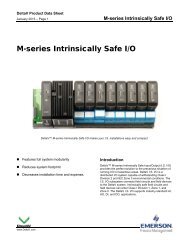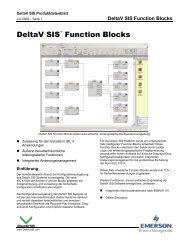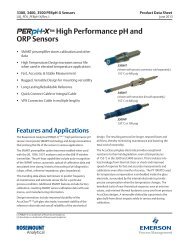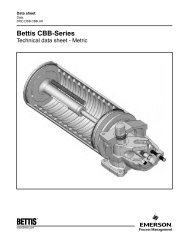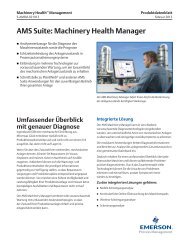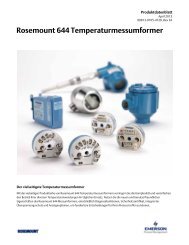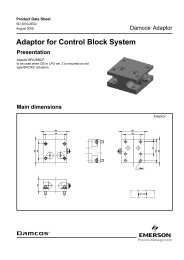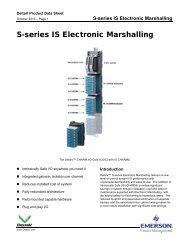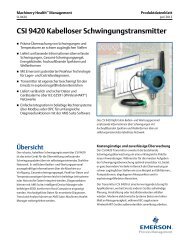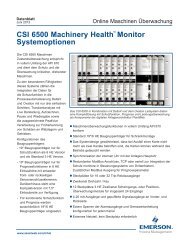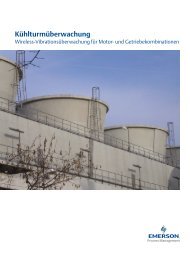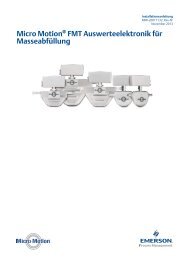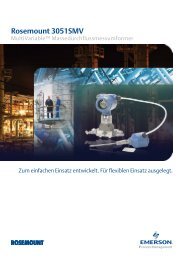1066 Liquid Analytical Transmitter - Emerson Process Management
1066 Liquid Analytical Transmitter - Emerson Process Management
1066 Liquid Analytical Transmitter - Emerson Process Management
Create successful ePaper yourself
Turn your PDF publications into a flip-book with our unique Google optimized e-Paper software.
Section 9: CalibrationSeptember 2013<strong>1066</strong> Instruction ManualLIQ_MAN_<strong>1066</strong>9.6.4Zeroing the SensorThe adjacent screen will appear during Zero Cal. Be sure sensor has beenrunning in zero solution for at least two hours before starting zero step.1.234µS/cm 25.0ºCSN Zero CalZeroingWaitThe adjacent screen will appear if In Zero Cal is successful. The screen willreturn to the Amperometric Cal Menu.1.234µS/cm 25.0ºCSN Zero CalSensor zero doneThe adjacent screen may appear if In Zero Cal is unsuccessful. The screenwill return to the Amperometric Cal Menu.1.234µS/cm 25.0ºCSN Zero CalSensor zero failedPress EXIT9.6.5In <strong>Process</strong> CalibrationThe adjacent screen will appear prior to In <strong>Process</strong> CalIf the In <strong>Process</strong> Cal is successful, the screen will return to the Cal submenu.1.234µS/cm 25.0ºCSN In<strong>Process</strong> CalWait for stablereading.The adjacent screen may appear if In <strong>Process</strong> Cal is unsuccessful. Thescreen will return to the Amperometric Cal Menu.1.234µS/cm 25.0ºCSN In<strong>Process</strong> CalCalibrationErrorPress EXIT9.7Calibration – OxygenOxygen sensors generate a current directly proportional to the concentration of dissolved oxygenin the sample. Calibrating the sensor requires exposing it to a solution containing no oxygen (zerostandard) and to a solution containing a known amount of oxygen (full-scale standard). The ZeroCalibration is necessary because oxygen sensors, even when no oxygen is present in the sample,generate a small current called the residual current. The transmitter compensates for the residualcurrent by subtracting it from the measured current before converting the result to a dissolvedoxygen value. New sensors require zeroing before being placed in service, and sensors should bezeroed whenever the electrolyte solution is replaced. The recommended zero standard is 5% sodiumsulfite in water, although oxygen-free nitrogen can also be used. The 499A TrDO sensor, usedfor the determination of trace (ppb) oxygen levels, has very low residual current and does not normallyrequire zeroing. The residual current in the 499A TrDO sensor is equivalent to less than 0.5ppb oxygen. The purpose of the In <strong>Process</strong> Calibration is to establish the slope of the calibrationcurve. Because the solubility of atmospheric oxygen in water as a function of temperature andbarometric pressure is well known, the natural choice for a full-scale standard is air-saturatedwater. However, air-saturated water is difficult to prepare and use, so the universal practice is touse air for calibration. From the point of view of the oxygen sensor, air and air-saturated water are84 Calibration



